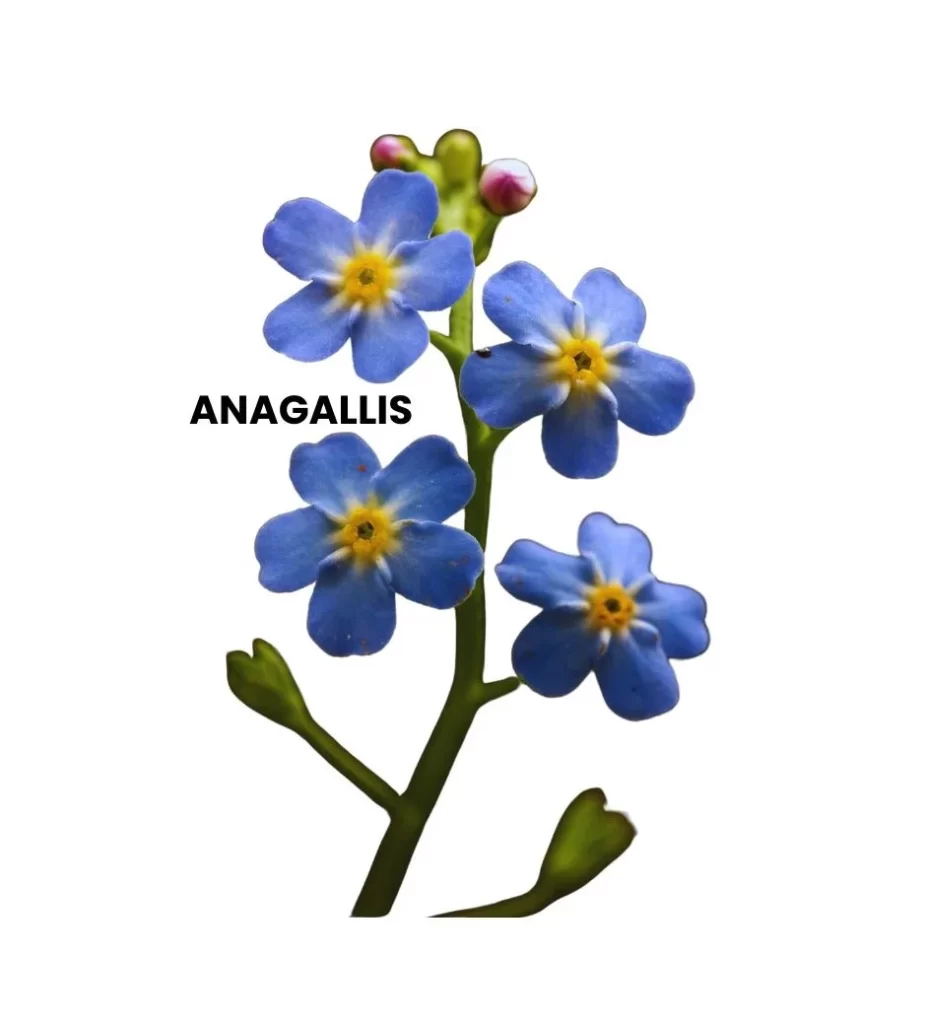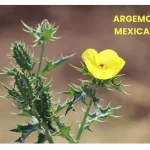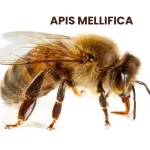Anagallis, commonly known as Scarlet Pimpernel, is a homeopathic remedy with marked actions on the skin, distinctive characteristics in the head, extremities, and urinary system.
It is historically associated with treating conditions such as hydrophobia, dropsy, and skin issues.

Table of Contents
ToggleSOURCE INFORMATION
- Kingdom: Plantae
- Division (or Phylum): Angiosperms (Flowering plants)
- Class: Eudicots
- Order: Ericales
- Family: Primulaceae
- Genus: Anagallis
- Species: Anagallis arvensis
Common Name: Scarlet Pimpernel
Origin: The Scarlet Pimpernel (Anagallis arvensis) is native to Europe and Asia, and it has become naturalized in other parts of the world, including North America.
It thrives in a variety of habitats, including meadows, fields, and disturbed areas.
Habitat: Scarlet Pimpernel is often found in open, sunny locations and is adaptable to different soil types.
Plant Form: It is an annual plant with a low-growing and spreading habit, typically reaching a height of 10 to 40 cm.
Leaves: The leaves are opposite, sessile, and oval-shaped.
Flowers: The distinctive flowers have five petals and can be various shades of red, orange, or blue. They are about 1 to 2 cm in diameter.
Historical Facts
Cultural Significance: The Scarlet Pimpernel has cultural significance due to its association with the novel “The Scarlet Pimpernel” by Baroness Orczy, first published in 1905.
The novel tells the story of a mysterious Englishman who rescues French aristocrats from the guillotine during the Reign of Terror in the French Revolution. The scarlet pimpernel flower serves as a symbol of his covert activities.
READ A DETAILED POST ON HISTORY OF MEDICINE BY FOLLOWING THE LINK.
DRUG PATHOGENESIS
- Softening Flesh and Wart Destruction: Anagallis is known for its unique ability to soften flesh and eliminate warts.
- Rheumatic and Gouty Pains: It is indicated in cases of rheumatic and gouty pains, particularly in the shoulder and arm.
KEY CHARACTERISTICS
- Skin Affection: Anagallis exhibits a significant influence on the skin, presenting with intense itching and tingling all over the body.
- Expulsion of Splinters: It is noted for its ability to aid in the expulsion of splinters from the skin.
- Actions on Head: Head symptoms include great hilarity, headache over the supra-orbital ridges, and relief from symptoms after consuming coffee.
PARTICULAR DISEASE SYMPTOMS
- Hydrophobia and Dropsy: Historically, Anagallis has been used for hydrophobia (fear of water) and dropsy (accumulation of fluid in the body).
- Skin Conditions: It addresses dry, bran-like eruptions, especially on the hands and fingers, with vesicles in groups and ulcers or swellings on joints.
REMEDY RELATIONSHIP
- Saponin Content: Anagallis contains Saponin, reinforcing its relationship with remedies rich in this chemical compound.
- Comparison: It is often compared with Cyclamen and Primula obcon.
DOSE
- Administer Anagallis in the first to third potency.
FREQUENTLY ASKED QUESTIONS
What is Anagallis used for?
Anagallis is indicated for skin issues, hydrophobia, and dropsy. It is also known for its role in expelling splinters.
How does Anagallis affect the head?
It can cause great hilarity, headaches over the supra-orbital ridges, and improvements with coffee consumption.
Can Anagallis help with rheumatic and gouty pains?
Yes, Anagallis is known to be beneficial in cases of rheumatic and gouty pains, especially in the shoulder and arm.
Difficult Words Explained
- Hydrophobia: An abnormal fear of water.
- Dropsy: An old term for the accumulation of excess watery fluid in tissues or cavities of the body.
- Supra-orbital: Relating to the area above the eye sockets.
- Agglutination: Clumping together, often referring to substances sticking or clumping.
- Urethra: The tube that carries urine from the bladder to the outside of the body.
- Vesicles: Small fluid-filled sacs.
- Pathogenesis: The development of a disease and the sequence of events leading to that disease.
- Rheumatic: Relating to or characterized by rheumatism, a condition causing pain and stiffness of the joints and muscles.
- Gouty: Relating to or affected by gout, a form of arthritis characterized by severe pain, redness, and tenderness in joints.













Leave a Reply